Diablo 4 is a game about legacies. It’s an examination of the legacy Inarius and Lilith left humanity, their children, and the world of Sanctuary. It’s about the legacy of the Horadrim and their fight against the Prime Evils and the impact made by heroes past and present.
Diablo 4 itself feels like a response to other games in the franchise. It grapples with the long shadow cast by both Diablo 2 and the fan response to Diablo 3 and Diablo Immortal. Most games and studios would crumple under such pressure. Most studios, as it turns out, are not Blizzard. And few games are as impressive as Diablo 4.
Diablo 4 begins like most action RPGs do: at class select. After selecting one of five classes — Barbarian, Rogue, Sorcerer, Necromancer, or Druid (all of which are pulled directly from Diablo 2 or, in the case of Rogue, a direct analog to Diablo 2’s Amazon) — you’re dumped into an absurdly detailed character creator that lets you customize just about everything you’d expect, from body type to hair and eye color, your face, tattoos, and more. There’s even an option that simulates vitiligo in the skin colors tab, another great addition among others.
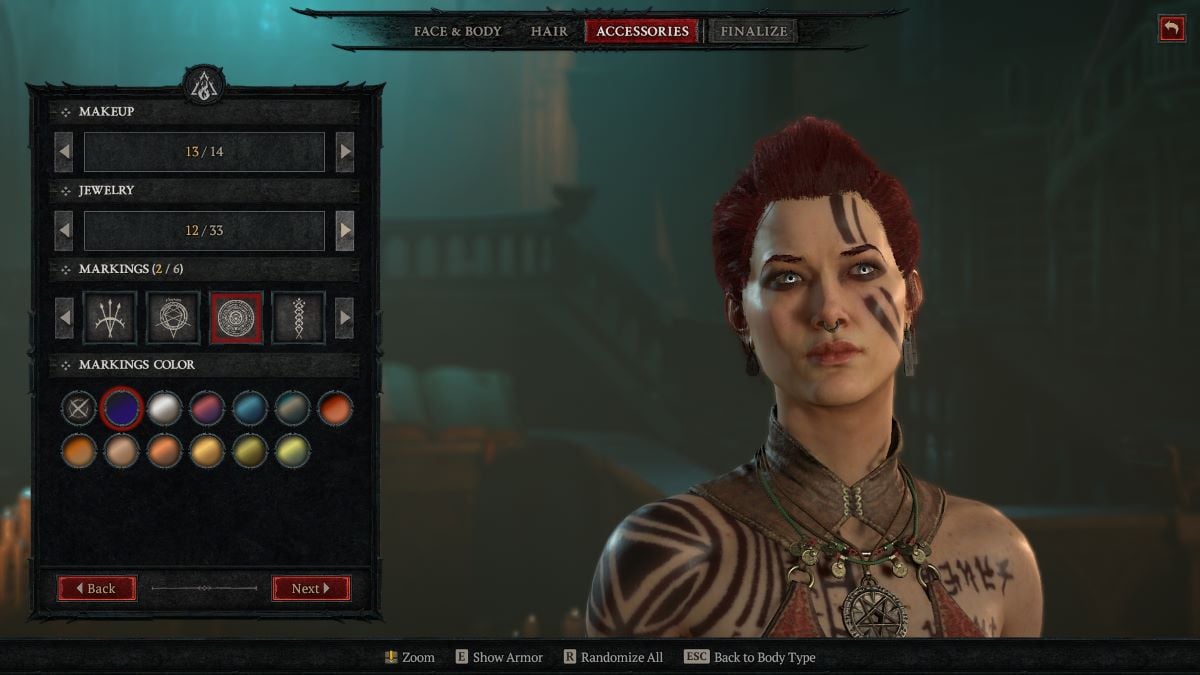
Once you’ve got your character looking how you want, you’re dropped right into the main story. I won’t be talking about anything beyond the first act in this review to avoid spoilers, as all of it has been playable throughout several betas. But if you haven’t played the game yet and would prefer to know nothing about Diablo 4’s story, skip the next three paragraphs.
Diablo 4 feels like a true sequel to Diablo 2, and you honestly don’t need to have played Diablo 3 to understand Diablo 4. If you have, though, you’ll recognize some stuff you’d otherwise miss. The story this time centers on stopping Lilith, the Daughter of Hatred and Mother of Sanctuary. Lilith is a demon, but she’s tired of the Eternal Conflict between the High Heavens and the Burning Hells and wants to burn the whole thing down, saving Sanctuary (and humanity, who she views as her children) in the process.
Man, there are a lot of proper nouns in Diablo. Trouble is, Lilith’s way of doing things is going to get an awful lot of people killed, and she’s still a demon, which means she isn’t trustworthy. Your character is drugged and fed some of Lilith’s blood after you mistakenly help a town of her followers by clearing out some nearby demons. The connection you share with Lilith becomes an important part of the story, and your character soon teams up with Lorath Nahr — the last of the Horadrim — to try and take her down.
It’s a nice little twist on the standard “adventurer walks into town and starts solving problems,” and it’s a good preview of how Diablo 4’s story plays out. Parts of this narrative are predictable, but parts of it aren’t, and it’s fun to see what happens.
Diablo 4’s story isn’t fundamentally revolutionary, but it’s clever, and I was always compelled to see what happened next. Whether I was earning the grumpy Lorath’s trust or helping Horadrim-in-training Neyrelle, I enjoyed watching these characters grow and change throughout the story and make decisions based on the trauma they’d endured. This is a dark game. Bad things happen and people die, but I was always emotionally invested. Diablo 4’s story is the best Blizzard has told in quite some time, and I’m eager to see how it changes with the addition of new content.
If I have one criticism of the plot, it’s that you spend a lot of the time chasing Lilith and not a lot of time interacting with her, which is kind of a shame given how fascinating and unique she is as a Diablo antagonist. It’s the Diablo 2 problem. The story here is interesting, but a lot of the time, your characters are playing catch-up and not affecting the main plot.
It makes sense in context because you’re a rag-tag band of reluctant heroes doing their best to stop a potentially world-ending demon. But that feeling lingers. Blizzard brings the whole thing home in a way that feels satisfying, however, while leaving some interesting questions open for the future.
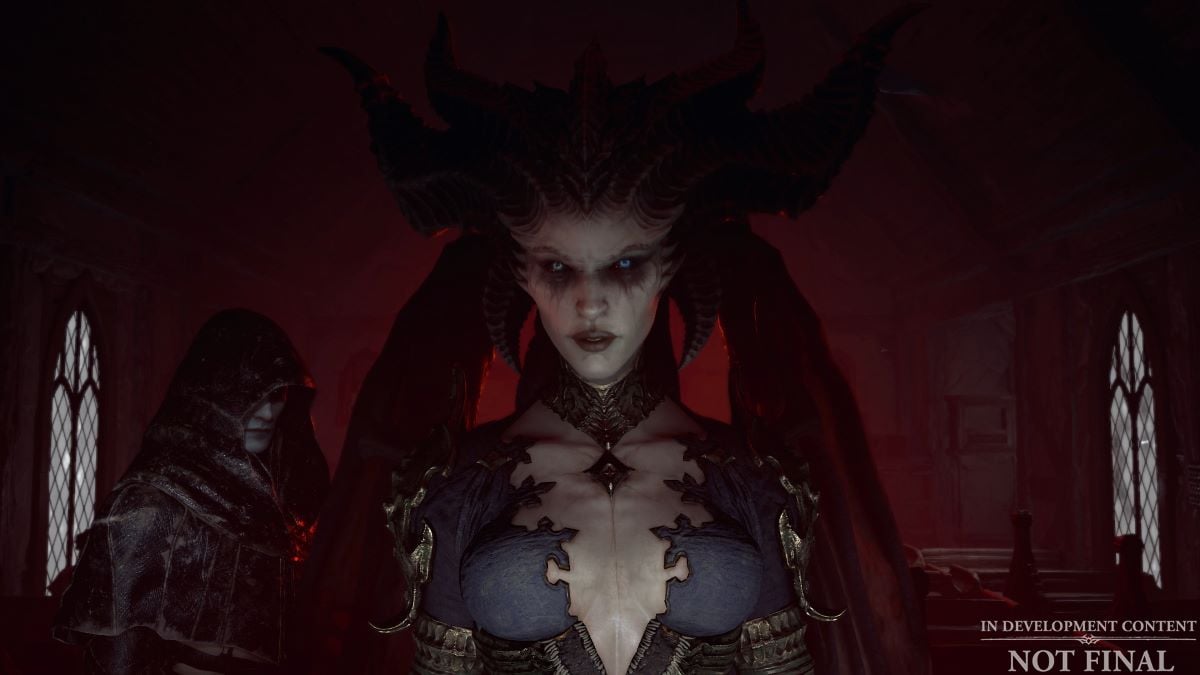
Okay, story talk over.
It’s worth noting that Diablo 4 looks and sounds excellent. The visual style reminds me of a Baroque painting. It’s dark, detailed, realistic, and clearly inspired by Diablo 2. Parts of it are horrific and disgusting, while other parts are strangely beautiful. As you play, it feels coherent and works together to complement everything around it. Though you spend a lot of time in an isometric perspective, the camera moves to ground level and gets close to the characters when a major plot point happens. It’s a smart decision, and I was more connected to the story because of it.
Blizzard’s cinematics team remains the gold standard for pre-rendered cutscenes, and Diablo 4’s are genuinely impressive, beautiful, and often quite long. Strap in.
As good as the visual design is, Diablo 4’s sound design might be better. There are some fantastic vocal performances here, though Lorath and Lilith are particular standouts. The sound effects, particularly demon screams, spell sounds, melee hits, and loud scary noises, are incredible and emotive. The most impressive thing, however, might be the music. The soundtrack flows with a pointed dynamic quality, full of memorable boss themes and mournful string music that plays when you’re not in combat. I never knew I wanted Diablo to sound like this until it did.
All of those things are highlights, but they’re probably not the reason you’re here. You’re here for the gameplay, and in that facet, Diablo 4 delivers completely.
Diablo 4’s five classes aren’t perfectly balanced. Sorcerer and Necromancer seem to be the standouts at the moment, while Rogue is fine, and Druid and Barbarian bring up the rear. Thing is, all of them are viable with the right build and a lot of fun to play otherwise.
- Sorcerers specialize in using fire, ice, and lightning magic to create absolutely disgusting balls of chaos. My build revolved around keeping enemies frozen and then pelting them with chain lightning.
- Rogues can dart in and out, dealing high damage up close by stacking crit and poison damage or fighting from afar with ranged attacks that make enemies vulnerable.
- Barbarians are your up-close bruisers; they can carry several weapons at once and use all of them on the fly.
- Necromancers are undead middle management: they summon armies of dead skeletons, steal life from enemies, and manipulate newly fallen corpses.
- Druid rounds everything out with a balance of nature magic and the ability to transform into either a werewolf or werebear for close encounters.
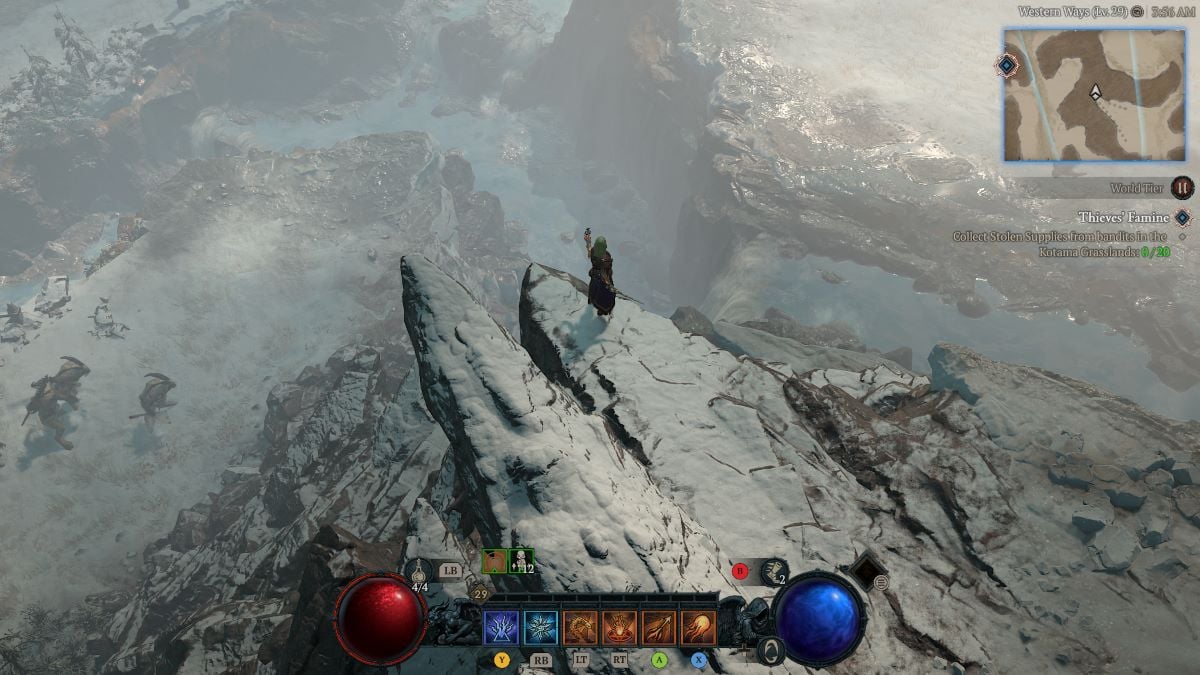
Reaching a certain level with each class unlocks a unique, class-specific quest that grants access to each class’ unique mechanic. Sorcerers can enchant spells with special properties; enchanting Fireball, for instance, means that each time it kills an enemy, that enemy explodes into another Fireball. It’s perfect for taking out large groups.
Rogues, on the other hand, gain access to Combo Points that boost the damage of their attacks when consumed and add special bonuses to abilities, while Druids can bond with animal spirits to receive special enhancements. These mechanics make each class feel different and add a lot of diversity to your build options.
The talent trees are equally diverse. Diablo 4 segments its talents into tiers, with each tier granting access to a different ability category, from the Core Skills at the core of your build to Defensive Skills that allow you to take more damage or escape from it entirely. Don’t like a spell? You can respect at any time — for a cost. Respecs are free at lower levels, but even at higher levels, the cost is never high enough to be prohibitive. Instead, it’s just enough to give you something to think about. The ability to mix and match skills from any of the ability tiers (and choose multiple on the same level) means you’ll never run out of ways to tinker with your build.
That’s good because you might want to depending on the gear you get. Early on, my Sorcerer got a legendary item that dropped a shield and made me invulnerable when I took damage. I could teleport into the middle of a pack of enemies, take some hits, stand in the shield, and keep casting without worrying about what was hitting me. Combine that with another item that gave me a chance to cast two lightning spells for the price of one, and I was clearing rooms with a combination of Frost Nova and Chain Lightning before the demons I was fighting knew what hit them.
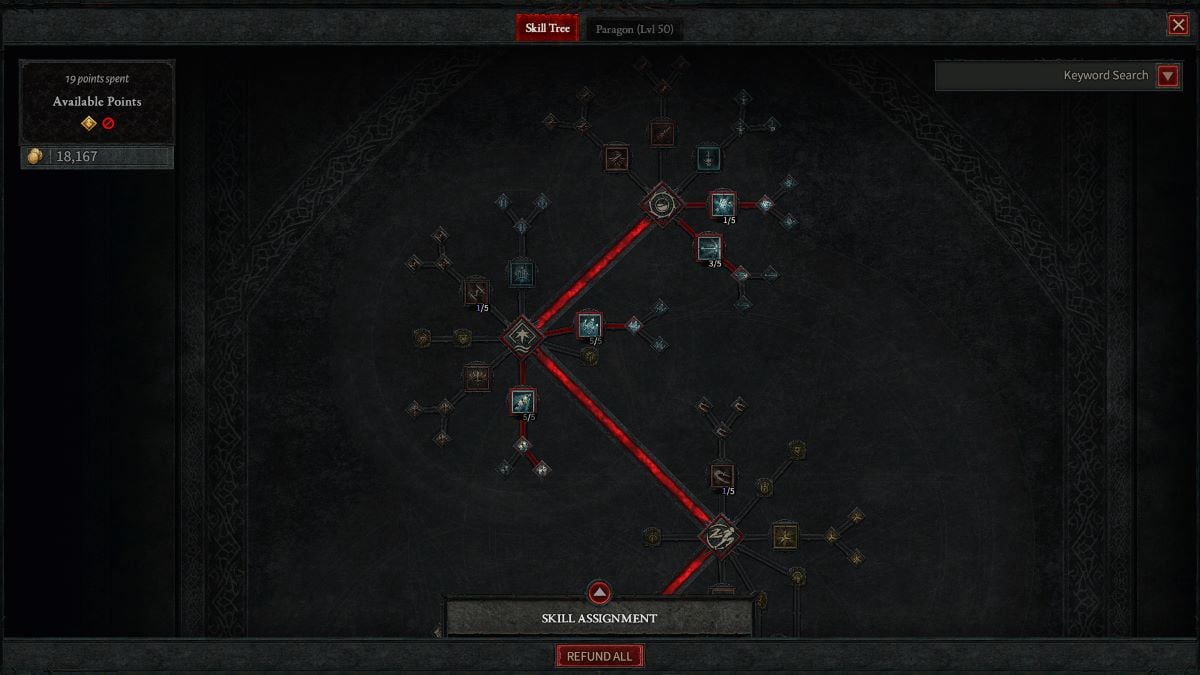
Diablo 4 throws loot at you, and tweaking your gear to match your abilities — and vice versa — is a lot of the fun. I felt the number of options was initially overwhelming, and I’m no stranger to Diablo, but once everything clicks, the amount of control you have over your build is frankly bonkers. Blizzard seems to have thought about everything here.
You can socket and easily unsocket gems into gear to improve its stats and add gem slots to gear that doesn’t have them if you have the right materials. If you love a particular piece of loot, you can upgrade it at the blacksmith to keep it relevant longer. If you’ve outgeared a certain legendary with a cool perk, you can pull it off and slap it on another one later. The systems mean you always have a lot of control over things, even if the drops don’t always go your way.
All of that wouldn’t matter if playing the game didn’t feel good, but Diablo 4 delivers there, too. Whether you’re running around the overworld fighting hordes of monsters, clearing out a dungeon, participating in a world event, or fighting a boss, Diablo 4 feels good to play because executing your class’ fantasy is fun.
Normal enemies aren’t much of a threat; you mow them down and keep moving. Special enemies, however, like shamans who can resurrect their fallen friends or shielded skeletons whose armor must be broken before you can damage them, add some spice to normal encounters. The real highlight is the bosses, particularly those from the story, which require you to manage several mechanics at once, whether they’re covering the ground in toxic goo, summoning mooks to fight you, or just getting up in your face themselves.
Diablo 4 works because it’s satisfying to play your character and do whatever it is your build does to turn enemies into giblets. It doesn’t matter what you’re doing. If the enemy you’re fighting has interesting mechanics for you and your buddies to play around, so much the better.
Speaking of friends, it’s pretty easy to play with them. Diablo 4 is online-only, and while that can lead to the odd problem when the servers are under a heavy load or your internet is having problems, for the most part, things work well. The console versions of Diablo 4 support local co-op, but if you’re looking to play with people online, it’s easy to get them into your game. I spent a good chunk of the review period playing with a friend in Australia (I live in New York), and our connection was near flawless.
Diablo 4’s world is shared, so you’ll run into other players anyway. I was initially skeptical of this decision, but it was always a pleasant surprise to see another bonafide adventurer, whether I stumbled on someone while taking on a world event or teamed up with a large group to take down a world boss.
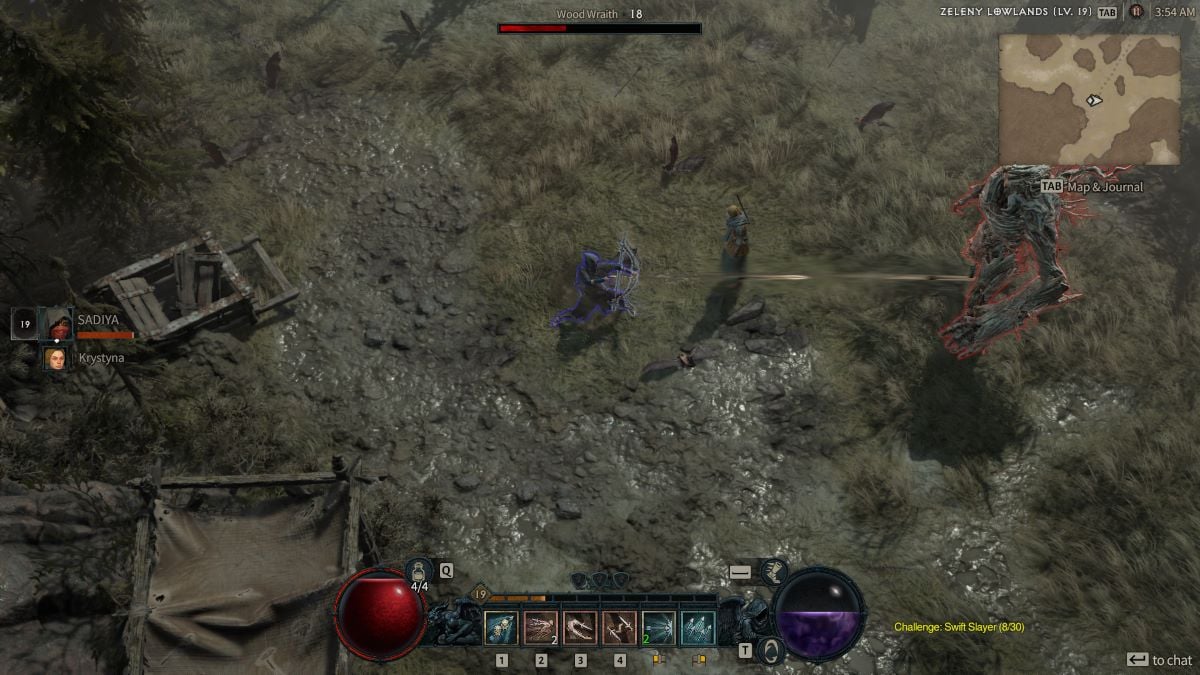
And what a world Sanctuary is. This game is massive, packed with hundreds of well-designed dungeons and well-written sidequests, as well as collectible Statues of Lilith to find, which grant permanent stat bonuses to all your characters. That doesn’t include the story, which takes around 15-20 hours to complete. Even then, you could spend hundreds of hours in Diablo 4 before you even got to the endgame.
It starts with doing quests for the Tree of Whispers, an evil tree populated with dismembered, whispering heads that spawns an infinite number of bounties for you to take on, and Nightmare Dungeons, which are souped-up versions of the older dungeons peppered with absolutely whacky additional mechanics.
Once you hit Level 50, you can do a Capstone Dungeon, which serves as a gear and skill-check and opens up World Tier 3, which unlocks even more activities and better loot. And then at Level 70, you can do another one that unlocks World Tier 4, which gives you access to even more stuff. And at Level 100, there’s another endgame dungeon. And I haven’t even gotten to the PVP zones yet.
All the while, you’re earning Paragon points, which can be spent to make your character even stronger. There’s a cap on Paragon Boards and the points associated with them, so you can’t just level up forever. The cool thing is that it forces you to make some pretty interesting build choices. Diablo 4 sports a frankly outrageous amount of content, but if you somehow get bored of it, you can just roll another character, who starts with all of your unlocked Statues of Lilith, renown rewards (extra skill points, potions, and the like you receive from performing tasks in each zone), and your mount for faster travel.
On top of that, you can also skip the story campaign entirely once any of your characters has completed it and head straight for whatever you want to do. And then there’s all of the live-service stuff that Blizzard will add down the road. I’m tired just thinking about it. But also very excited.
Diablo 4 Review — The Bottom Line
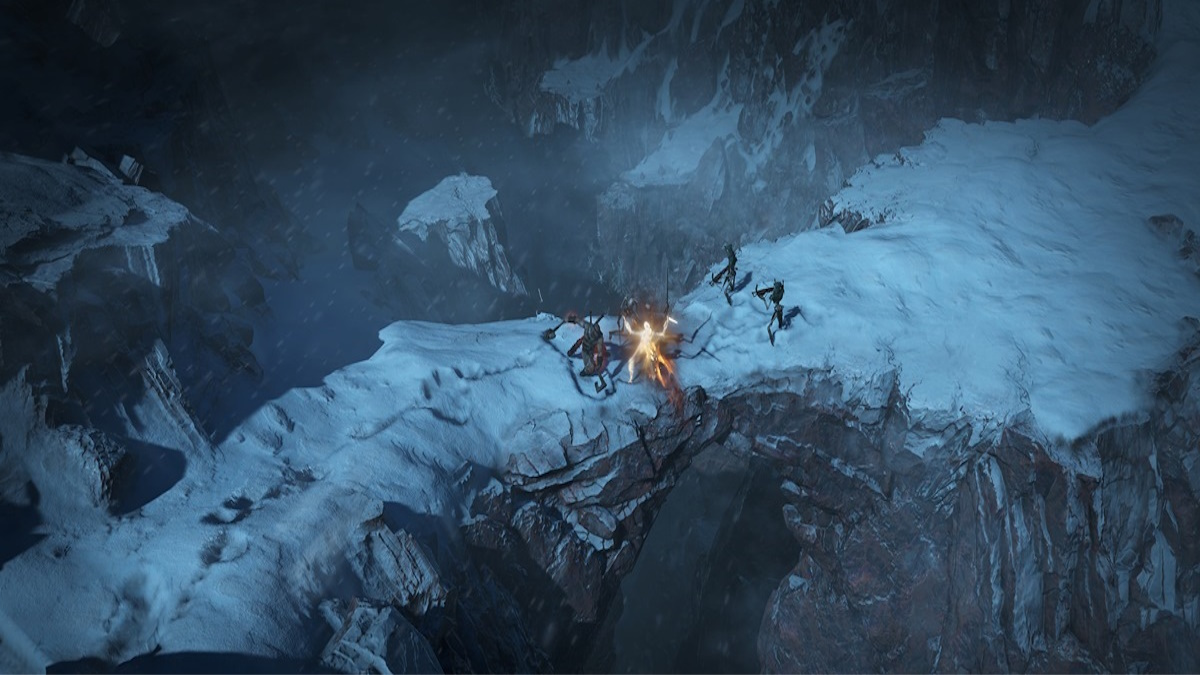
Pros
- An absurd amount of content to play through.
- Tons build freedom and variety.
- The story is well-written and voice-acted.
- Incredible art and sound design.
- Gameplay is fun and satisfying.
Cons
- It often feels like you’re playing catch-up in the story.
- Might be overwhelming for new players.
- The odd bug or glitch.
- Online-only requirements will turn some people off.
There’s just so much to Diablo 4. You could easily play this game for a hundred-plus hours before you even get to the endgame, and that number will skyrocket if you roll multiple characters or are a completionist. And that’s before Blizzard adds anything else.
The wild part is that almost all of it is good, and there’s something for everyone, whether you just want to play through once with friends or min-max your build and grind the endgame for the next ten years. The fact that this game was developed while Blizzard has been rocked by scandal is a testament to the skill and dedication of the team that made it.
Diablo 4 feels like a statement game from Blizzard, a “we’re back” for anyone who was concerned after Diablo 3’s rough launch and the middling reception to Diablo Immortal. It’s the sequel to Diablo 2 people have been waiting for, and it doesn’t disappoint. Diablo 4 is a game about legacies, so it’s fitting that in developing it, Blizzard has re-solidified the franchise’s — and its own.
[Note: Blizzard provided the PC copy of Diablo 4 used for this review.]

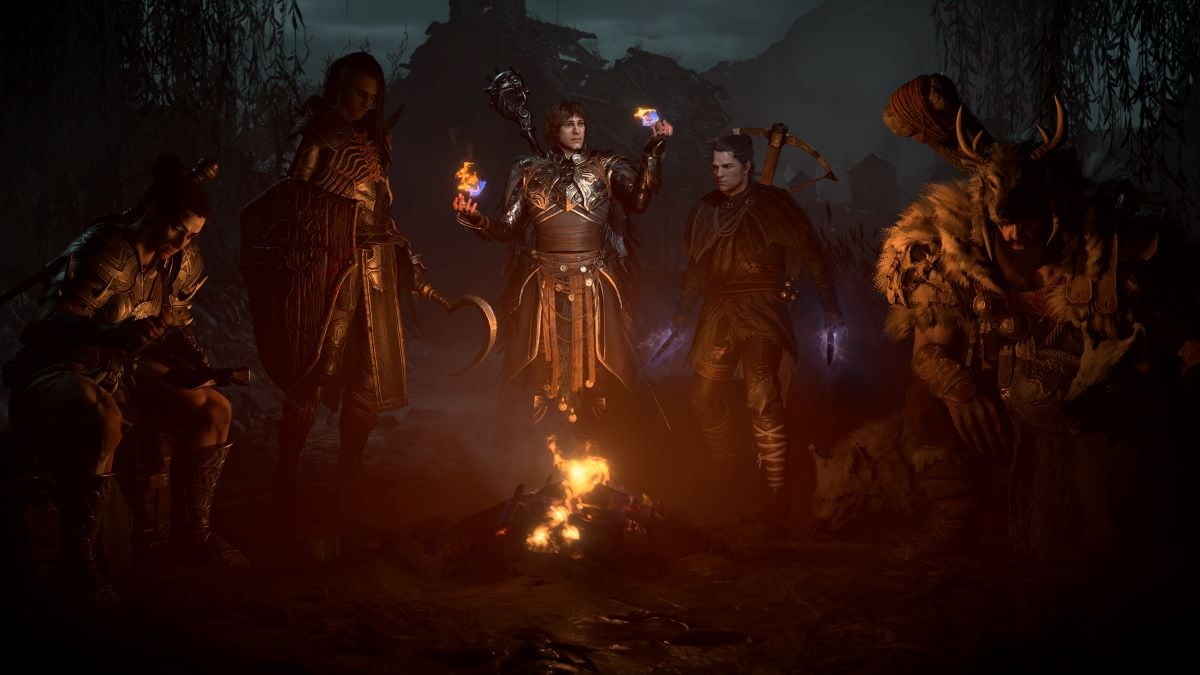





Published: May 31, 2023 06:14 pm